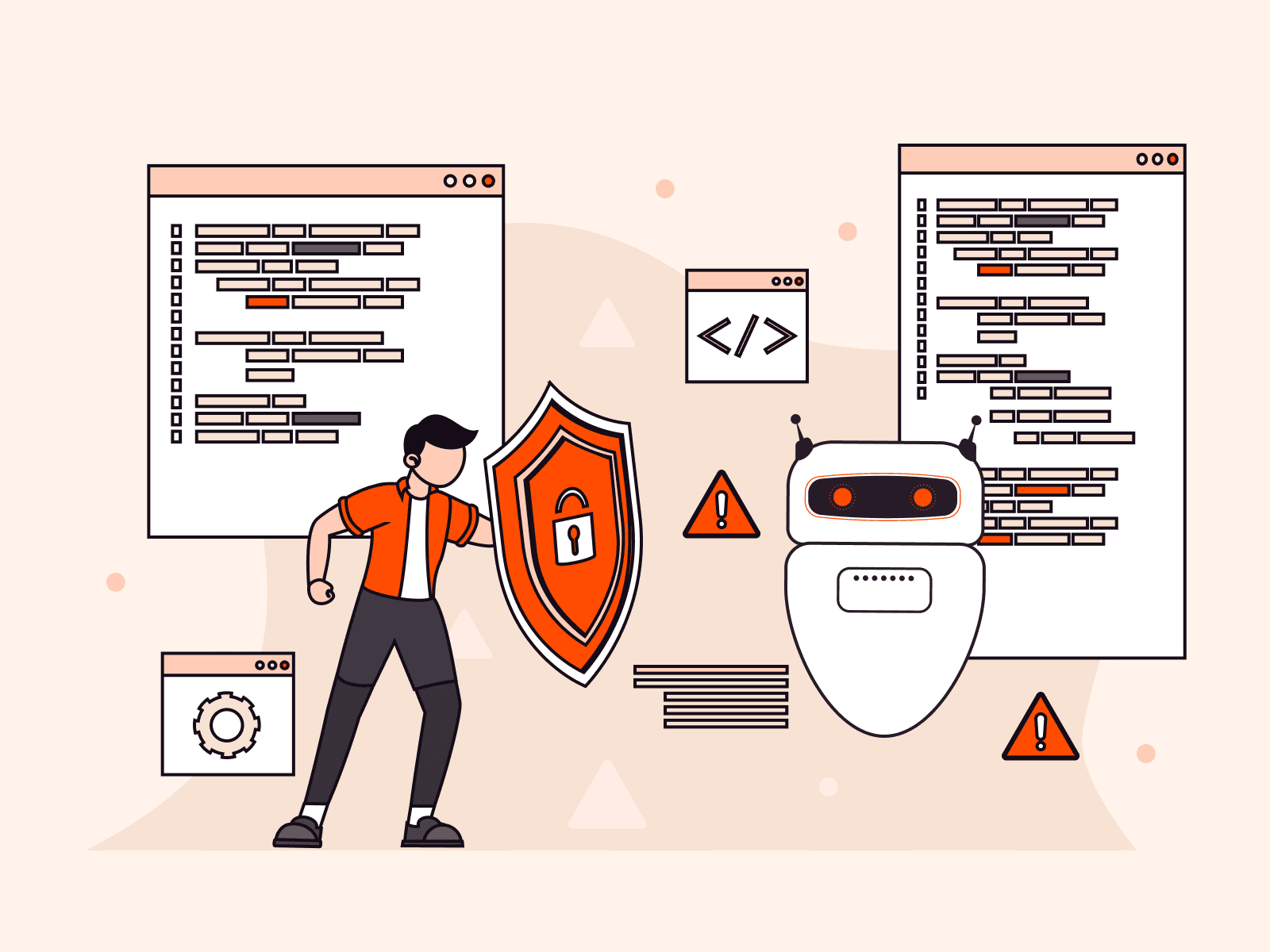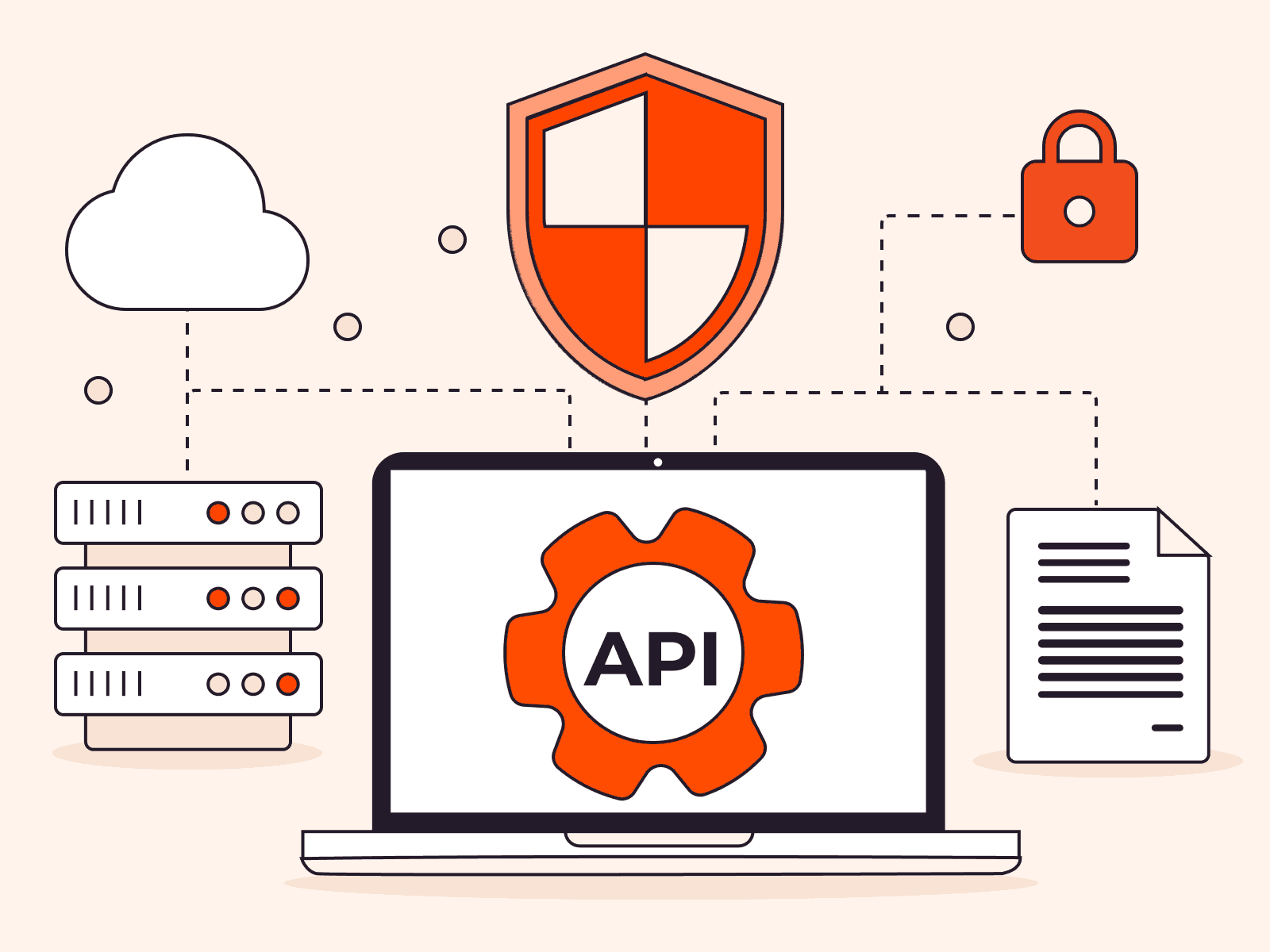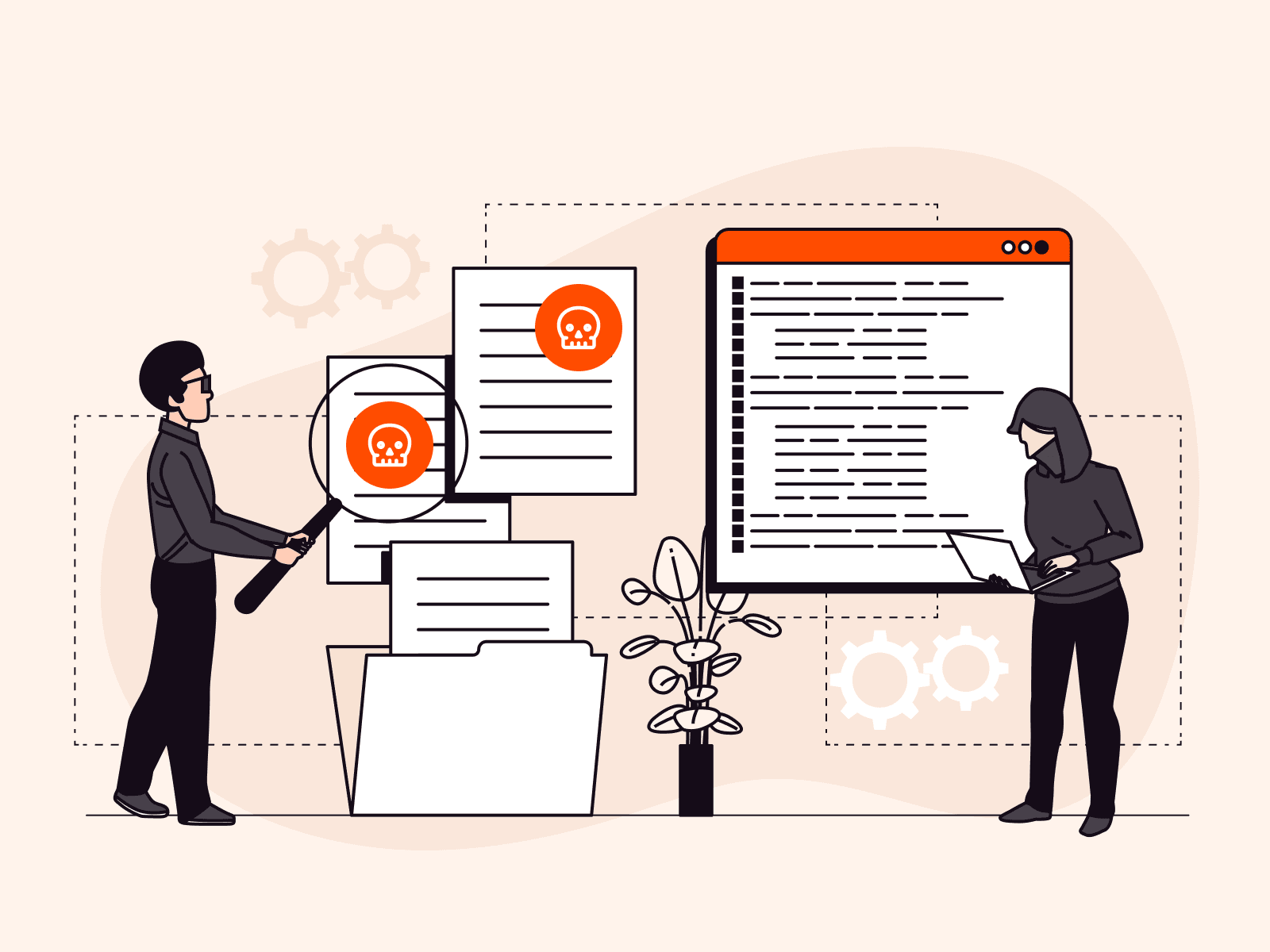Companies today rely heavily on websites and web applications to communicate with their employees, partners, and clients across different locations and time zones. However, this increase in digital communication comes with an increased risk of cybercrime. It is crucial for businesses to understand the potential web security vulnerabilities in their IT systems and take proactive measures to safeguard sensitive assets. This post provides an overview of cybercrime, and then explores the top 10 web security vulnerabilities of which you should be aware in detail.
What Are Web Security Vulnerabilities?
Web security vulnerabilities are weaknesses or misconfigurations in a web application that an attacker can exploit to gain unauthorized access or perform unauthorized, malicious actions. These vulnerabilities act like open windows in a house, enabling unauthorized access. Web security vulnerabilities can exist in various parts of a web application, including the server, host, or application software itself. Web applications interact with users across various networks, making them attractive targets for hackers.
When web application vulnerabilities are exploited, businesses are at risk of cybercrime, meaning that potential threats exist to the confidentiality, integrity, and availability of their data and services. For example, these attacks often intend to steal valuable sensitive information, such as personal data, intellectual property, or financial details, and comprise the data stored in the system as a whole. Cybercrime can result in fraud (like identity theft,) holding businesses to ransom for their data, or undermining trust in a service provider.
To grasp the gravity of web security vulnerabilities, we need to consider three key factors: exploitability, detectability, and potential impact.
Exploitability
Exploitability refers to the level of ease with which an attacker can take advantage of a security vulnerability. At one end of the spectrum, an attack may only require a web browser, making it highly exploitable. At the other end, advanced programming skills and tools are necessary, resulting in low exploitability.
Detectability
Detectability plays a vital role in identifying security threats. The higher the detectability, the easier it is to recognize a vulnerability. Information displayed in the URL, forms, or error messages provides clues that aid in vulnerability identification, offering a high level of detectability. Conversely, low detectability involves delving into the source code, demanding advanced knowledge and expertise. For example, a vulnerable web application that leaks sensitive user data via a poorly implemented authentication mechanism can be easily identified through error messages or anomalies in the URL structure.
Potential Impact
Assessing the potential impact or damage caused by a security vulnerability is key. A highly impactful vulnerability can result in a complete system crash, leading to significant disruptions and potential data breaches. Consider an SQL injection vulnerability that allows attackers to manipulate database queries. Exploiting this vulnerability can lead to unauthorized access, data theft, or even the modification of critical information, causing severe consequences. On the other hand, a vulnerability with low impact may not cause any damage at all.
By understanding exploitability, detectability, and potential impact, organizations can effectively evaluate the risks associated with web security vulnerabilities. Armed with this understanding, appropriate measures can be implemented in a timely manner to mitigate these risks.
10 Common Web Security Vulnerabilities
To effectively address web security, it is crucial to have a comprehensive understanding of the common vulnerabilities that can be exploited by attackers. You can only fix what you can first identify! These vulnerabilities often stem from flaws in the design, implementation, or configuration of web applications.
#1 Broken Access Control

Broken access control is a critical security vulnerability that occurs when users can access data or resources that they should not have permission to access. This breach in access control can arise due to various factors, including poor permissions management, weak authentication mechanisms, or misconfigured security controls. Let’s look at each in turn.
Poor Permissions Management
Poor permissions management is a common cause of broken access control. When permissions are not properly configured, users may gain access to sensitive data or resources that should be restricted. This can happen when access privileges are inaccurately assigned, leading to unintended exposure of sensitive information. Inconsistencies in permission settings across different parts of an application can also contribute to this vulnerability, allowing unauthorized users to bypass access restrictions.
Weak Authentication Mechanisms
Weak authentication mechanisms play a significant role in broken access control. If authentication mechanisms are not robust, attackers can exploit these weaknesses to gain unauthorized access to a system. Weak passwords, lack of multi-factor authentication (MFA,) or ineffective session management can all contribute to the vulnerability. For example, if a user chooses a weak password or if password complexity requirements are not enforced, it becomes easier for attackers to guess or crack passwords and gain unauthorized access to user accounts.
Misconfigured Security Controls
Misconfigured security controls is another web security vulnerability that can lead to broken access control. When security controls are not properly configured, attackers may find ways to bypass these measures and gain unauthorized access. This can occur when security configurations are left at default settings, which might not provide adequate protection. Misconfigurations in firewall rules, access control lists, or other security components can also create loopholes that allow unauthorized access.
Mitigating Broken Access Control
Mitigating broken access control requires implementing proper access control mechanisms, strong authentication practices, and vigilant security configurations. Access permissions should be carefully defined and regularly audited to ensure that users can only access the data and resources they are authorized to. Robust authentication mechanisms, such as strong passwords, multi-factor authentication, and secure session management, should be implemented to prevent unauthorized access. Additionally, security controls and configurations should be reviewed and updated regularly to address any vulnerabilities or misconfigurations.
#2 Cryptographic Failures

A cryptographic failure refers to a web security vulnerability through which the implementation or usage of cryptographic measures fails to provide the intended level of security, which can compromise the confidentiality, integrity, or availability of the data that the cryptography was supposed to protect. Cryptographic failures pose a significant security risk when sensitive data is not properly encrypted or when cryptographic keys are mishandled. These vulnerabilities can result in severe consequences, including data breaches and identity theft.
Insecure Storage of Cryptographic Information
One prevalent cryptographic vulnerability is the insecure storage of cryptographic information. This vulnerability arises when sensitive data is stored in an insecure manner, leaving it vulnerable to exploitation. For instance, sensitive data like user credentials, profile information, health details, and credit card information all require protection. However, if this data is improperly stored without adequate encryption or proper hashing techniques, it becomes an attractive target for malicious actors.
Consider a scenario where a web application stores user passwords in plain text or uses weak encryption algorithms. In the event of a security breach, attackers can gain unauthorized access to the application’s database and easily retrieve and exploit the stored passwords. This can have devastating consequences, including unauthorized account access, identity theft, and the compromise of other systems or services where users reuse passwords.
The implications of this web security vulnerability are far reaching. Exploiting this vulnerability allows attackers to steal or modify weakly protected data, leading to identity theft, credit card fraud, and other criminal activities. The primary vulnerable object in this scenario is the application database where the data is stored. Such activities can cause financial losses, damage reputations, and even result in legal consequences.
#3 Injection Flaws

Injection flaws happen when an attacker injects malicious data into a command or query that is then processed by an application. These flaws occur when an application sends untrusted data to an interpreter or a service without properly validating or sanitizing the input first. The malicious data can lead the interpreter or service to execute unintended commands, leading to data loss, corruption, or unauthorized access.
SQL Injection
SQL injection is a widespread security vulnerability that occurs when a hacker injects malicious SQL code into a web application, enabling unauthorized access to sensitive data or control over the affected system. This type of attack poses a significant threat, often resulting in the compromise of e-commerce websites and the illegal retrieval of valuable information such as user details, credit card data, and social security numbers.
To safeguard against SQL injection, ensure that your SQL database is appropriately configured. Employ best practices such as using parameterized queries or prepared statements, as they help prevent attackers from manipulating SQL statements. Regularly update your devices with the latest security patches, as software updates often address known vulnerabilities that can be exploited by attackers.
Other Injection Vulnerabilities
Injection vulnerabilities are not limited to SQL injection. Other forms of injection vulnerabilities, such as LDAP injection or Cross-Site Scripting (XSS) can also pose significant risks. To protect against these types of vulnerabilities, it is crucial to implement input filtering and validation mechanisms. Any untrusted input received by your application should undergo thorough filtering, preferably using a whitelist approach. This ensures that only expected and validated input is accepted, effectively preventing attackers from injecting malicious code or scripts. Relying solely on blacklists can be challenging to configure effectively and may be circumvented by skilled attackers.
To mitigate the risk of injection vulnerabilities, implement robust user authentication tools, Strong authentication mechanisms (such as enforcing complex passwords and utilizing multi-factor authentication) to help prevent unauthorized access to sensitive data, and restrict access privileges based on the principle of least privilege. The latter ensures that users only have access to the resources they require to perform their tasks, reducing the potential impact of an attack.
#4 Insecure Direct Object References
Insecure direct object references (IDOR) vulnerabilities arise when a web application exposes internal objects, such as files, directories, or database keys, through URLs or form parameters. These vulnerabilities stem from blindly trusting user input, which can lead to unintended exposure of sensitive information. Exposure of the internal objects can enable attackers to gain unauthorized access to other objects that were not initially exposed, and potentially compromise the application’s data integrity.
Examples and Implications of IDOR Vulnerabilities
The implications of IDOR vulnerabilities are significant, as attackers can exploit them to access unauthorized internal objects, manipulate data, or compromise the overall security of the application. For example, consider a download module that allows file downloads without proper authorization checks. If this module exposes the file path within the URL, an attacker could modify the URL to access other system files that should be restricted. This can result in unauthorized access to sensitive data, compromising the confidentiality and integrity of the application.
Similarly, insecure direct object references in password reset functions can be exploited by attackers to manipulate privileged accounts. If the password reset functionality exposes user account information within the URL or form parameters, an attacker could tamper with the values to gain unauthorized access to privileged accounts. This can lead to unauthorized actions, data breaches, and potential damage to the overall security of the application.
#5 Server-Side Request Forgery (SSRF)

Server-side request forgery (SSRF) is a specific type of attack that exploits a distinct vulnerability. SSRF vulnerabilities occur when a web application fails to properly validate user-provided URLs when accessing remote resources. Attackers can manipulate vulnerable applications to send crafted requests to specific URLs, bypassing access controls like firewalls that would typically block direct connections to the target URL but grant access to the compromised web application.
One case of an SSRF vulnerability is the unauthorized retrieval of sensitive data from an internal database through a vulnerable web application. By carefully exploiting the SSRF vulnerability, an attacker can deceive the application into making requests to internal URLs, ultimately gaining access to confidential information. Proper input validation and robust security measures are essential for web applications to mitigate the risk of SSRF attacks.
One recent example highlighting the impact of SSRF vulnerabilities is the Capital One hack. In this incident, 140,000 Social Security numbers and 80,000 bank account numbers were stolen. The attack exploited an SSRF vulnerability that allowed the attacker to gain unauthorized access to sensitive information. Remarkably, the incident remained undetected for four months, emphasizing the significance of identifying and addressing SSRF vulnerabilities promptly and effectively.
#6 Cross-Site Request Forgery (CSRF)

Cross-site request forgery (CSRF) is an attack in which a malicious entity deceives a user’s browser into performing actions on a trusted website without their knowledge or consent. This type of attack occurs when the user is already authenticated on the targeted site. By forging a request with the user’s session cookie and other authentication information, the attacker can carry out unauthorized actions, potentially compromising the victim’s account.
The implications of a CSRF vulnerability are severe. Attackers can manipulate user profile information, change status updates, or even create new users on behalf of administrators. Certain objects within a web application, such as user profile pages, user account forms, and business transaction pages, are particularly vulnerable to CSRF attacks.
CSRF in E-commerce
To understand the potential impact of a CSRF vulnerability, consider a scenario where a victim is logged into a frequently used e-commerce website. Unbeknownst to them, simply browsing the web without first logging out can enable a cybercriminal to trick the browser into making purchases on a different website they visit, without their consent. By embedding malicious code into that website, the hacker can utilize the victim’s saved payment information and complete a purchase using their account.
#7 Outdated or Vulnerable Web Application Components

The use of outdated or vulnerable components in web applications can pose significant security risks. In recent years, the emergence of supply chain vulnerabilities has magnified these concerns. Threat actors deliberately inject malicious or vulnerable code into widely used libraries and third-party dependencies, creating a potential entry point for attackers. Organizations that lack visibility into their external code and fail to promptly apply necessary security updates expose themselves to significant risks.
Real-world incidents have demonstrated the dire consequences of neglecting to update third-party software. For instance, outdated WordPress plugins that remained unpatched in environments for prolonged periods led to severe security breaches. Attackers exploited these vulnerabilities to gain unauthorized access and compromise entire systems, resulting in data breaches, service disruptions, and reputational damage.
It is essential to recognize that software development goes beyond initial deployment. It requires meticulous documentation, rigorous testing, and effective maintenance plans, particularly when utilizing third-party or open-source components. Proactive steps should be taken to assess web applications for vulnerable and outdated components during the maintenance and deployment stages of development.
#8 Security Misconfigurations
Security misconfigurations are when a component of a system is not set up correctly, leading to potential vulnerabilities that can be exploited by cyberattackers, exposing organizations to risks of unauthorized access and data breaches, also allowing the attacker to gather critical information about the application for further attacks.
Alarming industry reports indicate that up to 95% of security breaches stem from human error, implementing proper security configurations incorrectly. This highlights the critical role that comprehensive security practices play in preventing incidents. One prevalent cause of security misconfigurations is the failure to regularly update and patch systems, frameworks, and components, leaving them exposed to known vulnerabilities.
Implications of Security Misconfigurations
The implications of security misconfigurations are severe, as they provide attackers with opportunities to identify the underlying technology, access sensitive information, and potentially compromise the entire system. For example, leaving an application server’s admin console with default settings and unchanged passwords creates an easily exploitable entry point for unauthorized access. Similarly, enabling directory listing on the server inadvertently exposes valuable files and directories to potential attackers.
#9 Unvalidated Redirects and Forwards

Unvalidated redirects and forwards (URF) present security vulnerabilities in web applications. These vulnerabilities arise when applications redirect or forward users to URLs supplied by the users themselves. Attackers exploit URF vulnerabilities to redirect users to malicious sites, leading to data theft, malware installation, and other harmful actions. These vulnerabilities occur when developers fail to properly validate user input, enabling attackers to inject malicious code into URLs or query strings.
Examples of URF
Improper configuration of web applications can also contribute to URF vulnerabilities. For example, the use of insecure random number generators in web applications can facilitate the manipulation of URLs or query strings by attackers. They can predict and manipulate these parameters, redirecting users to malicious sites without their knowledge or consent.
To give another example, imagine a website’s redirect.php module accepts a URL as a parameter, which can be manipulated to deceive users with seemingly safe links that actually lead to malicious destinations. Users may unknowingly provide sensitive information or fall victim to malware or phishing attacks. Implementing input validation and strict rules for user-supplied URLs can mitigate URF vulnerabilities, ensuring user safety and protecting against unauthorized redirects.
#10 Software and Data Integrity Failures

Software and data integrity failures refer to vulnerabilities in web security that take place when the integrity of critical data and software updates is not verified before they are added to the delivery pipeline. These failures can result from faulty assumptions, outdated software, insufficient vulnerability scanning, erroneous input validation, missing patches, missing unit tests, or insecure component configurations.
In today’s agile software development landscape, where rapid updates are common, the lack of strict integrity checks poses a serious risk. These failures can have far-reaching impacts, including unauthorized information disclosure, system compromise, and the insertion of malicious code. Attackers can exploit these vulnerabilities by injecting malicious inputs, which can impact various stages of the deployment pipeline.
Insecure Deserialization
Insecure deserialization is a common manifestation of software and data integrity failures. Attackers can tamper with input payloads during deserialization, coercing the application to execute malicious code or alter its logic. Another example is the reliance on unvalidated cookies. Applications often use cookies for security controls, but without proper integrity checking, hackers can modify cookies to supply malicious input, perform injection attacks, or bypass authentication.
What Are the Repercussions of Web Security Vulnerabilities?
Cybercrime can have severe consequences for businesses that become victims. The repercussions may include damage to the company’s reputation, loss of customer trust, financial losses, and potential legal issues. It is crucial to understand the gravity and type of these threats and take proactive steps to mitigate them.
How Can You Protect Your Business Against Web Security Vulnerabilities?
Implementing web security measures is essential to reduce vulnerabilities and defend against potential attacks. Waiting until a breach occurs is not an effective strategy. On average, it takes 287 days to detect and contain a single data breach. Adopting a proactive approach to data protection is crucial to save time, optimize resources, and safeguard valuable company assets.
Begin by conducting a comprehensive web security assessment. This assessment should encompass evaluation of vulnerabilities in your systems, networks, and applications, focusing on areas including data storage, access controls, encryption, and employee awareness. By identifying and addressing these vulnerabilities, you can enhance your overall security posture and protect your business from cybercrimes.
Conclusion
As organizations embrace the accelerating power of web-based communication, it is essential to prioritize the security of the valuable information held therein. By understanding and addressing common web security vulnerabilities, organizations can fortify their defenses and safeguard against online threats.
The path to effective cybersecurity involves taking proactive measures to counter the ten common web security vulnerabilities discussed here. Examples of such proactive cybersecurity measures include regular security updates and patching, robust authentication mechanisms, secure coding practices, thorough input validation, strict configuration management, and comprehensive security testing. Staying informed about emerging threats, promoting security awareness among employees, and maintaining a culture of vigilance are vital for maintaining a strong defense against evolving web security risks. By prioritizing web security, organizations can protect their sensitive data, maintain customer trust, and preserve their reputation in an increasingly interconnected digital landscape.
At Gcore, we understand the critical importance of choosing the right cybersecurity tools to protect your digital assets. Gcore’s Web Application Security is a comprehensive, all-in-one solution. It includes a Web Application Firewall (WAF) with a built-in ML mechanism that continuously checks reliability and identifies potential vulnerabilities. Let us take care of your web application security so you can focus on your business goals.
Related articles
Subscribe to our newsletter
Get the latest industry trends, exclusive insights, and Gcore updates delivered straight to your inbox.






